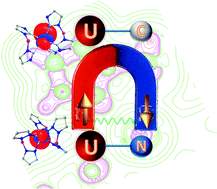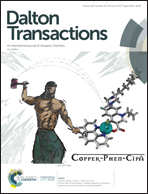How important is the coordinating atom in controlling magnetic anisotropy in uranium(iii) single-ion magnets? A theoretical perspective†
Abstract
Theoretical investigation of actinide based nanomagnets is of paramount interest in the field of molecular magnetism as they offer remarkable properties compared to their lanthanide counterparts. Unlike lanthanides, the magnetic properties of actinides can be fine-tuned by modulating the ligand field as they possess a large metal–ligand covalency. In this regard, two complexes reported earlier have gained attention: [U(BcMe)3] (1) has been found to show Single-ion Magnet (SIM) characteristics whereas isomeric [U(BpMe)3] (2) does not exhibit any SIM behaviour. To unravel the origin of the differences observed in magnetic anisotropy, a detailed ab initio CASSCF study has been undertaken on the X-ray structure of complexes 1 and 2. Since actinide compounds exhibit strong covalency, the desired active space needs to be benchmarked to address this issue. Here, we have enlarged the active space systematically from CAS(3,7) to CAS(3,12) where all 5f electrons in 5f orbitals are sequentially expanded to include five formally empty 6d orbitals. Our calculations reveal that the incorporation of the 6dz2 orbital is vital in reproducing many experimental observables such as temperature dependent susceptibility, g-factors, ground state mJ level, and ground-state-excited-state gap. Inclusion of this orbital in the reference space is found to describe better the U⋯H–BH agostic interactions leading to significant variations in the computed parameters. Gaining from this understanding, we have carried out extensive bonding analysis within the DFT framework using tools such as Natural Bond Orbital (NBO) and Atoms In Molecule (AIM) to further probe these weak agostic interactions. Also, predictions to enhance the U-ligand covalency using U–sulphur bonds and the role of the U–C distance and C–U–C bite angles in the nature of anisotropy have been studied, and relevant magneto-structural correlations have been developed. Thus our results for the first time provide a comprehensive understanding of uranium based SMMs and offer ways to fine tune the anisotropy for experimental chemists.



 Please wait while we load your content...
Please wait while we load your content...